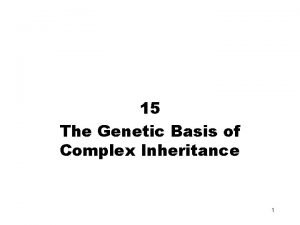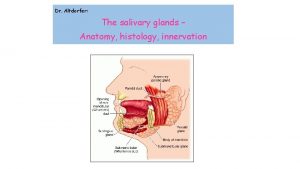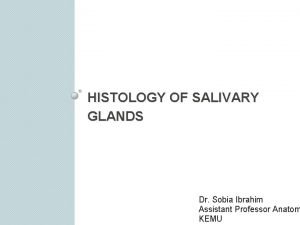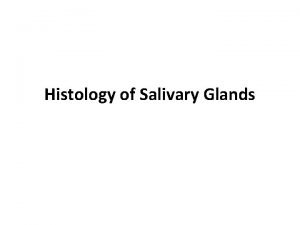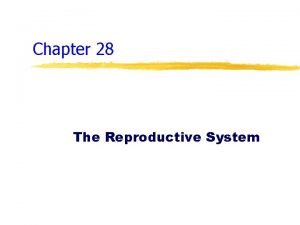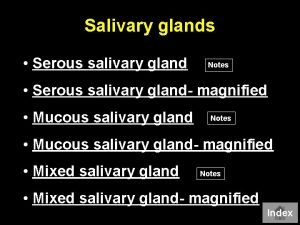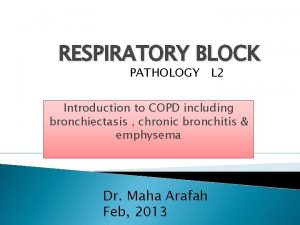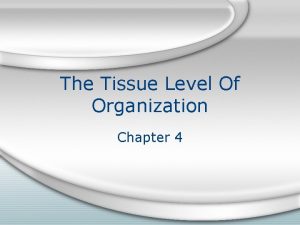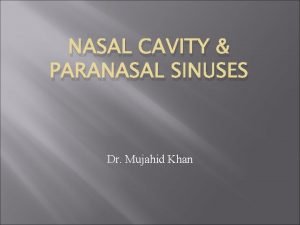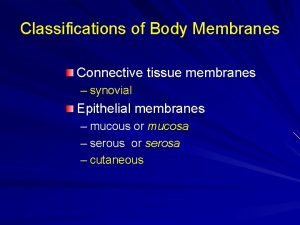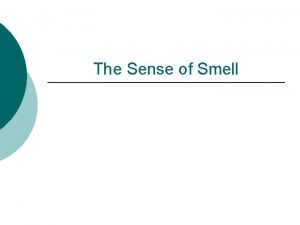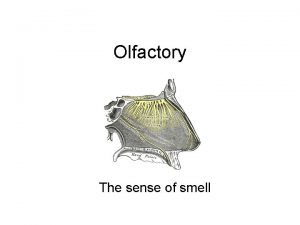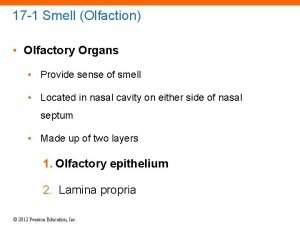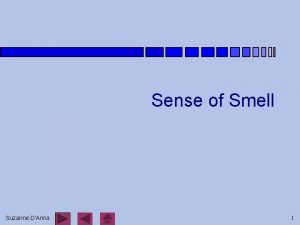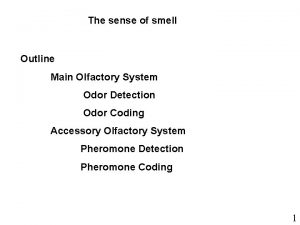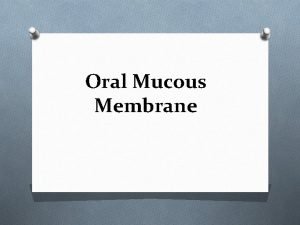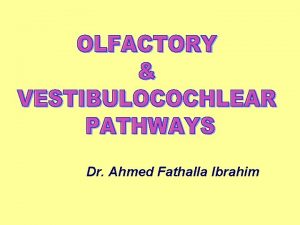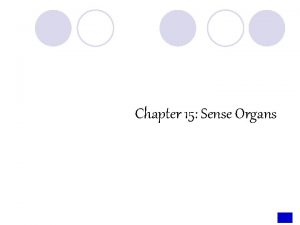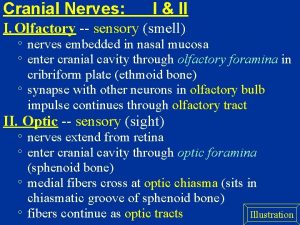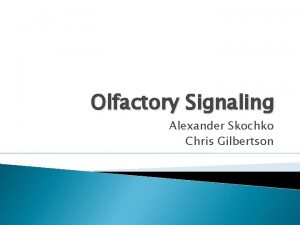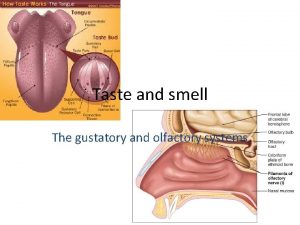The Sense of Smell Gonalo Martins Olfactory Mucous
















- Slides: 16

The Sense of Smell Gonçalo Martins

Olfactory Mucous Membrane -Olfactory receptor cells -Area of 5 cm 2 in roof of nasal cavity near the septum -10 to 20 million receptor cells -Each olfactory receptor is a neuron -Olfactory mucous membrane is the place in body where NS is closest to external world

Composition of Olfactory epithelium -Each neuron has a thick dendrite with an expanded end called olfactory rod -From rods cilia project to the mucous surface -Each receptor neuron has 1020 cilia -Axons of olfactory receptor neurons pierce cribriform plate of ethmoid bone and enter olfactory bulbs -Olfactory neurons have halftime of few weeks.

Mucus producing Glands -Olfactory mucous membrane is constantly covered by mucus -Mucus is produced by Bowman’s glands, placed just under the basal lamina of the menbrane

Olfactory Bulbs -Axons of receptors contact the primary dendrites of mitral cells and tufted cells. -Forming complex globular synapses called olfactory glomeruli. -Periglomerular cells are inhibitory neurons connecting one glomerulus to another

Olfactory Bulbs -Granule cells have no axons and make reciprocal synapses with lateral dendrites of tufted and mitral cells -Mitral and Tufted – excite granule releasing glutamate and granule cell in turn inhibits both by releasing GABA

Stimulation of Olfactory cells

Stimulation of Olfactory cells G-protein is stimulated triggers activation of Adenyl cyclase (enzyme speeds up the conversion of ATP to c. AMP – c. AMP then binds to action channels in membrane of ciliathis causes channels to open and Ca ions to enter cilia – influx of Ca ions activates Cl channels to open and Cl leaves. Membrane becomes depolarized and AP is created. The action potential travels down the axon of olfactory receptor cell eventually meets with the other axons and forms the olfactory nerve (CN I)

Stimulation of olfactory cells

Transmission of smell signals to CNS

Olfactory thresholds and discrimination Olfactory receptors respond only to substances in contact with olfactory epithelium and need to be dissolved in mucus Substance mg/L of Air Ethyl ether 5. 83 Chloroform 3. 30 Pyridine 0. 03 Oil of peppermint 0. 02 Iodoform 0. 02 Butyric acid 0. 009 Humans can recognize more than 10. 000 different odors Propyl mercaptan 0. 006 Artificial musk 0. 00004 However determination of intensity of odor is poor Methyl mercaptan 0. 0000004 Methyl marcaptan one of the substances in garlic can be smelled at very low concentration showing the remarkable sensitivity of olfactory receptors

Vomeronasal Organ is not well developed in humans very well developed in rodents This organ is concerned with perception of odors that act as pheromones There is evidence of pheromones in humans and a close relationship between smell and sexual function

Role of Pain Fibers in the Nose Many trigeminal pain fibers are found in olfactory membrane They are stimulated by irritating substances Are responsible for initiating sneezing, lacrimation and other reflex responses.

Abnormalities ¡ Anosmia – absence of sense of smell ¡ Hyposmia – diminished olfactory sensitivity ¡ Dysosmia – distorted sense of smell ¡ More than 75% of humans over the age of 80 have an impaired ability to identify smells

Summary

Bibliography ¡ Guyton and Hall, Medical physiology, 10 th edition ¡ Elsevier Ltd. Boron & Boulpaep: Medical Physiology, updated edition ¡ William F. Ganong, Review of Medical Physiology, 22 nd edition ¡ Ward, Clarke & Linden, Physiology at a glance
 Smell imagery examples
Smell imagery examples Do owls have a sense of smell
Do owls have a sense of smell Dominant genetic variance
Dominant genetic variance Narrow sense heritability vs broad sense heritability
Narrow sense heritability vs broad sense heritability Parotid duct
Parotid duct Gruczoł
Gruczoł Male std warning signs
Male std warning signs Mucous acini
Mucous acini Uterus perimetrium
Uterus perimetrium Pseudostratified columnar
Pseudostratified columnar What is serous secretion
What is serous secretion Chapter 25 sexually transmitted infections and hiv/aids
Chapter 25 sexually transmitted infections and hiv/aids Dense regular connective tissue
Dense regular connective tissue Pathophysiology emphysema
Pathophysiology emphysema Mucous connective tissue
Mucous connective tissue Middle nasal concha
Middle nasal concha Classification of body membranes
Classification of body membranes



